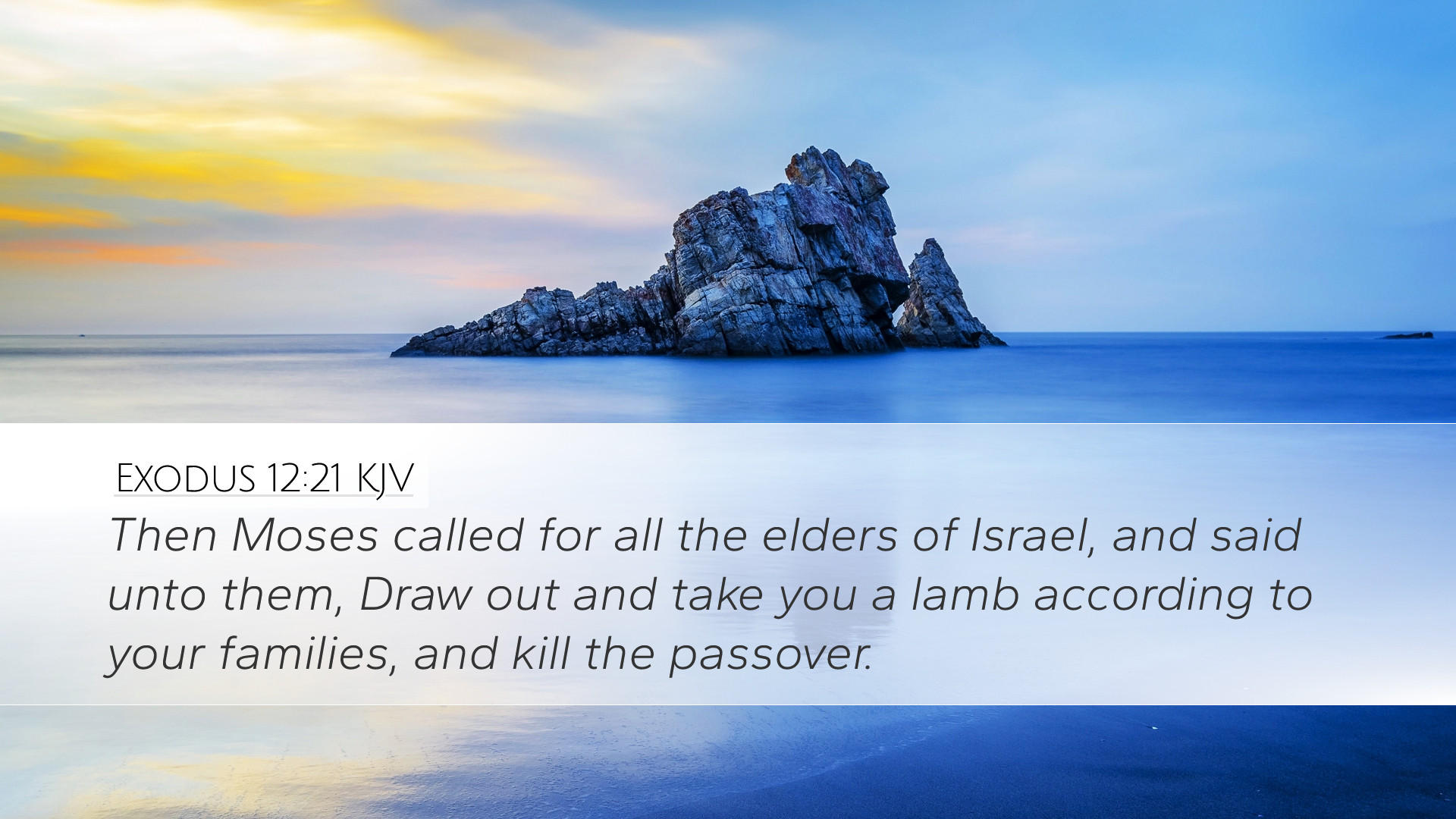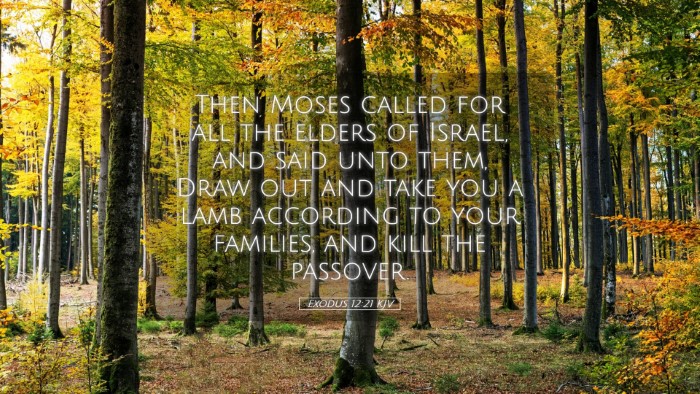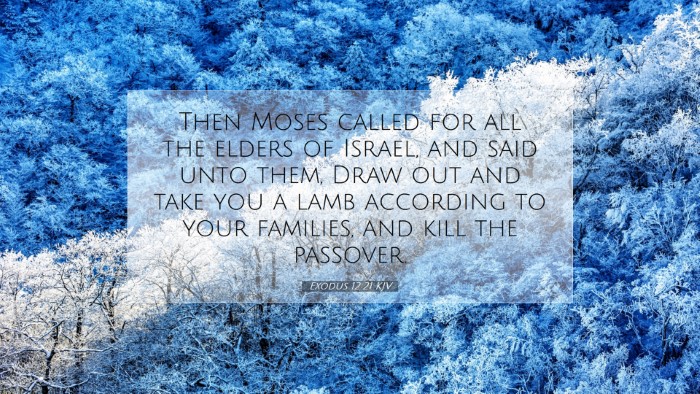Commentary on Exodus 12:21
Contextual Background: Exodus 12:21 occurs within the narrative of the Exodus, where God commands Moses and Aaron to prepare for the final plague—the death of the firstborn in Egypt. This command signifies significant theological implications and foreshadows the redemptive work that would culminate in the New Covenant.
The Call to Action
Moses gathers the elders of Israel and relays God’s command concerning the Passover. This gathering signifies a pivotal moment as the Israelites are prepared to be delivered from Egyptian bondage. The obedience to God’s command is crucial, as it sets the stage for their liberation.
Leadership and Instruction
Matthew Henry emphasizes the role of leaders in guiding their congregations or communities. Moses is depicted as a faithful leader who communicates God’s instructions clearly. The elders represent a collective leadership among the Israelites, demonstrating the importance of unity in executing divine mandates.
The Lord’s Supper Foreshadowed
This event foreshadows the institution of the Lord’s Supper, as both involve a sacrificial lamb and deliverance from death. Albert Barnes points out the parallels between the Passover lamb and Christ, the Lamb of God, whose sacrifice leads to eternal life. This typology enriches the understanding of redemption.
Instructions for Sacrifice
The instruction to select a lamb for the Passover clearly defined the nature of the sacrifice required to avoid the impending judgment from God. This act of faith in selecting a lamb was not only a physical preparation but also a spiritual act of obedience.
Significance of the Lamb
- Physical Purity: The lamb had to be without blemish (Exodus 12:5). Adam Clarke interprets this as highlighting the necessity for personal holiness in worship and sacrifice.
- Symbol of Innocence: The selection of a lamb, an innocent creature, serves as an atonement symbol. This underscores God's justice yet mercy, a theme prevalent throughout Scripture.
- Collective Responsibility: Each household bearing the responsibility to sacrifice emphasizes communal participation in God’s redemption plan.
The Act of Sacrifice
Upon selecting the lamb, the command to sacrifice it at twilight illustrates the solemnity and seriousness of the act. Henry notes that twilight, being the time of transition, symbolizes the shift from bondage to freedom, echoing the spiritual transitions believers experience.
Blood Applied
Subsequently, the blood of the lamb was to be applied to the doorposts. This signifies the protection of God over His people. Albert Barnes discusses how the blood represents a sign of covenant, reinforcing the understanding that those who are under the blood are safe from judgment.
- Divine Protection: The blood is a mark of safety and divine favor, which highlights God's grace. In blood, we see not just judgment averted but also God’s provision for His people.
- Call to Faith: This act required faith from Israelites—trusting in God's promise that seeing the blood would lead to their salvation (Exodus 12:13).
The Impact of Obedience
The obedience of the Israelites in following God's command resulted in the sparing of their firstborn during the final plague. Clarke emphasizes that this act of faith led to their liberation and establishment as God’s chosen people.
Faith and Deliverance
Here, we see themes central to the Christian faith—obedience resulting in salvation. The act of placing the blood serves as an act of faith and reliance on God’s promise for deliverance. Reflection on this can bolster one’s understanding of faith and grace in Christian theology.
Theological Implications
The Passover's significance is layered with theological depth. It draws attention to God’s sovereignty, justice, and mercy. Furthermore, the ongoing observance of Passover in Jewish tradition and the connection to Christian communion provides a means for understanding continuity in the biblical narrative.
Fulfillment in Christ
Ultimately, Jesus Christ is the fulfillment of the Passover sacrificial system. The New Testament writers draw explicit parallels between Jesus and the Passover lamb, reinforcing that through His sacrifice, believers are redeemed from the bondage of sin and death.
Conclusion
Exodus 12:21 encapsulates a profound moment of divine revelation, obedience, and deliverance that continues to resonate through faith traditions. The call to prepare and sacrifice ensures that the faithful recognize the gravity of sin, the assurance of salvation, and the necessity of communal participation in God’s redemptive narrative. Scholars and theologians encourage deeper engagement with these themes as they continue to inform Christian doctrine, worship, and ethical living.


